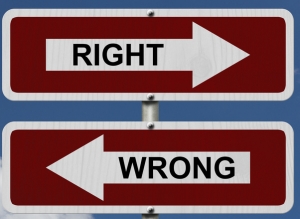 I have been teaching regular yoga classes for three years now and have a seven-year asana practice. My meditation practice began more than half a lifetime ago. I don’t consider myself to be an expert on yoga or even a good yoga teacher for that matter. I strive to continue learning about yoga, and trying on different techniques in teaching and practicing that I learn from my own teachers. I even dream of the day that I will feel content in my abilities as a yoga student and as teacher but I know that my thirst for knowledge on the subject of yoga will never be quenched.
I have been teaching regular yoga classes for three years now and have a seven-year asana practice. My meditation practice began more than half a lifetime ago. I don’t consider myself to be an expert on yoga or even a good yoga teacher for that matter. I strive to continue learning about yoga, and trying on different techniques in teaching and practicing that I learn from my own teachers. I even dream of the day that I will feel content in my abilities as a yoga student and as teacher but I know that my thirst for knowledge on the subject of yoga will never be quenched.
In the three evening classes that I teach, I see about as many frequent attendees as I see new students. We have people who ‘try’ yoga, we have ‘grouponers’ and we have the occasional traveling student just looking or a safe haven to knock out an hour of asanas while in town. I’m always amazed at the diversity of people that walk through the door.
Just this week, a new student registered for classes at our studio. She came along with a friend and signed up for 10 classes. I usually inquire as to what brings a new student to our studio and if they are completely new, I typically ask why they chose yoga as a way to spend their evening. The answers I get are very interesting. One answer that has become a trend in the past couple of years is “My doctor recommended that I try yoga.”.
Another that I hear often is “I just healed from (insert injury here) and I want to try yoga to get back in the swing of things.”
We also have parents bring their teenagers in because they are “not very flexible”.
Typically I reassure parents that inflexibility in teens is very common and nothing to be too terribly concerned about. But, as you know, parents know best. But, the this one particular student expressed an answer which I had never heard.
When I asked her about her yoga practice, she said, “I’ve been practicing yoga from youtube videos.”
“Interesting,” I replied. “Have you taken classes from any yoga teachers?”
She admitted, “There’s a lady on my street that teaches in her home. Sometimes I take her classes”
I responded “What made you decide to come here today?”
She quickly replied “I wanted to practice yoga the right way”
My mind recoiled in objection at first considering I’ve tried to avoid the use of right, wrong or should while teaching. I tried to hear between her words.
“Right Yoga?”
Even if I believed in such a thing, I could not consider myself to be any more right or wrong than any other yoga teacher out there. In the past year, I have tried moving beyond a right or wrong approach to yoga asana. But this time, upon hearing these words, I began to think that perhaps the subjectivity of right or wrong changes context when the perspective changes.
I do admit it is an obvious statement, but the realization hit me with incredible clarity. In this instance, right or wrong yoga did have a place, and a meaning from the perspective in which it was viewed – From the person who was unsure if her practice was right or un-right.
Without comparison, how does a person judge or gauge one’s approach? I immediately tossed my class plan for the evening to the side. I decided to spend the hour refining some of the most simplistic postures in yoga. My new plan for the evenings class was to lay the foundation for optimal alignment in lunges and standing poses. I approached teaching that evening from a place of knowing what works through experiential knowledge. To me, this was right yoga for the moment. Instead of repeating what I have heard and teaching what I felt was expected, I first got grounded in my understanding of the asanas and began to lead the class beginning with the foundation of each pose. When the foundations were satisfactory for all the students in the asana, I would cue directions for muscle energy for the students to experience. The approach was simple, and it was efficient for me as a teacher, as the wording was economical enough get foundation and expression in each pose, while also being effective enough for students to get into the posture, get grounded and play with the expansion and muscle energy without becoming exhausted.
 Coming back to the perspective of right vs wrong, I looked at what was going on with the subjectivity of the idea from my perspective. I teach yoga and understand the different approaches for teaching. I also superficially understand the perspective of a new student who does not have the same experiential knowledge that I do. The manner in which I approached the yoga class, was for certainty in technique, economy of language and empathy for new students. This ensured that the postures were completed in what most would agree is ideal alignment. I provided cues for finding stability, and having a few breaths to experience and feel the energy in the body. Though I don’t consider this to be ‘right’, perhaps a student who does not have a frame of reference would. From what she shared with me, her teacher did no centering, never cued breathing and did no warm-up or sequencing whatsoever. So in her perspective, she finally took a yoga class from someone, who in her words, “knows what they are doing.”
Coming back to the perspective of right vs wrong, I looked at what was going on with the subjectivity of the idea from my perspective. I teach yoga and understand the different approaches for teaching. I also superficially understand the perspective of a new student who does not have the same experiential knowledge that I do. The manner in which I approached the yoga class, was for certainty in technique, economy of language and empathy for new students. This ensured that the postures were completed in what most would agree is ideal alignment. I provided cues for finding stability, and having a few breaths to experience and feel the energy in the body. Though I don’t consider this to be ‘right’, perhaps a student who does not have a frame of reference would. From what she shared with me, her teacher did no centering, never cued breathing and did no warm-up or sequencing whatsoever. So in her perspective, she finally took a yoga class from someone, who in her words, “knows what they are doing.”
This was a great experience for me on many levels. Foremost, being reminded that the subjectivity of an idea is only relevant to the context from which it is derived. I was given the opportunity to truly listen to someone and hear the words spoken but also understand their needs that were unspoken. And though I have tried to move beyond the concepts of right and wrong, and remain with what is appropriate, this experience led me to realize that to some, right and or wrong may be the contrast of their reality. This was a lovely reminder for me to remain open, to listen with the intent to hear and to be in service to those who need refinement upon this path. As always, the students are my best teachers.
